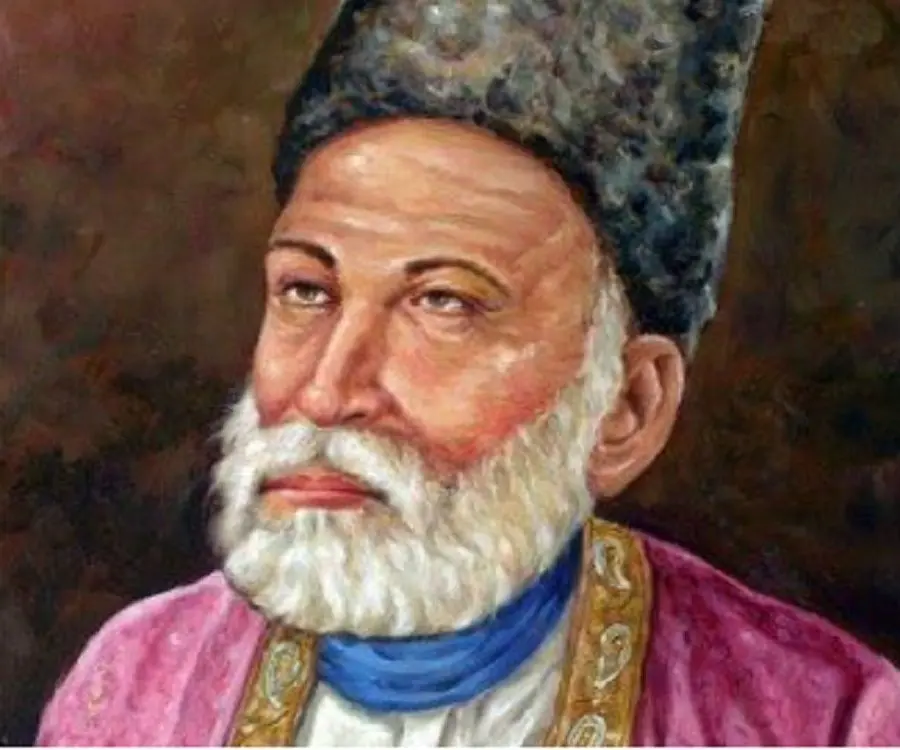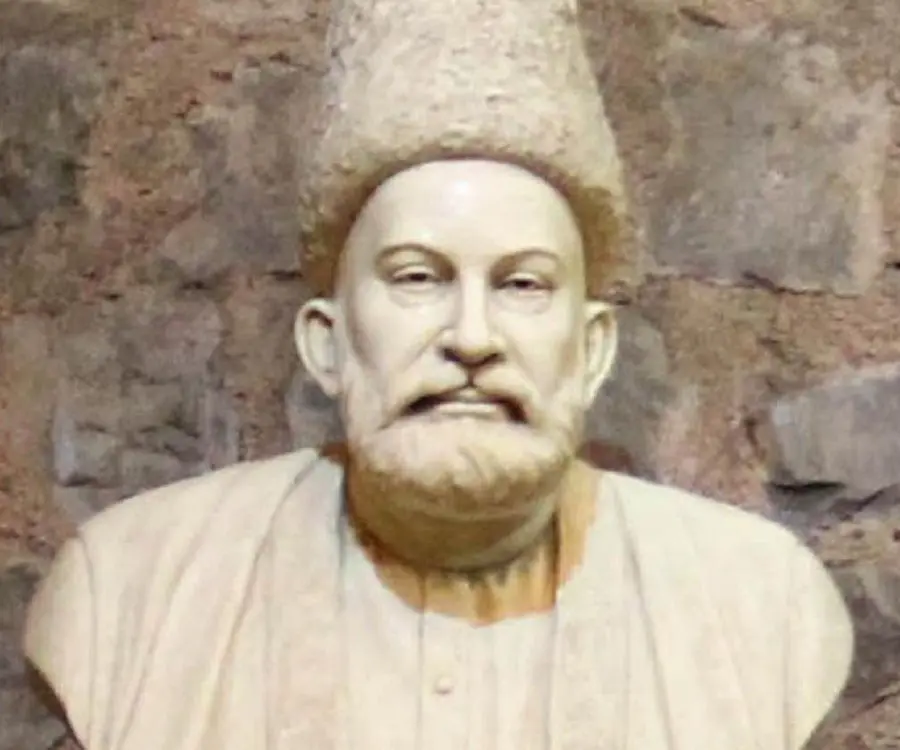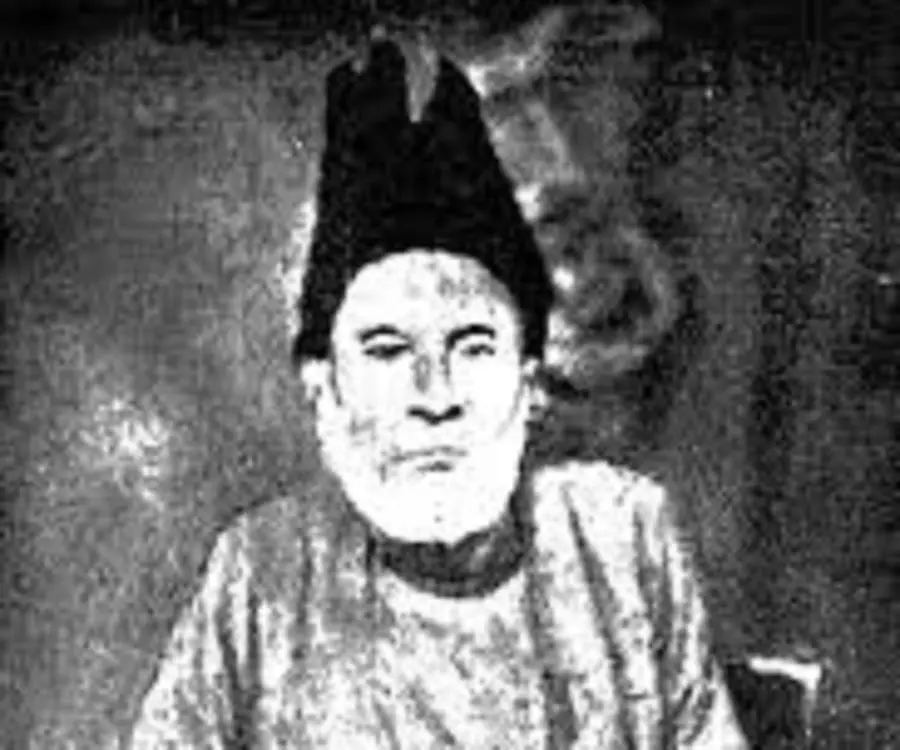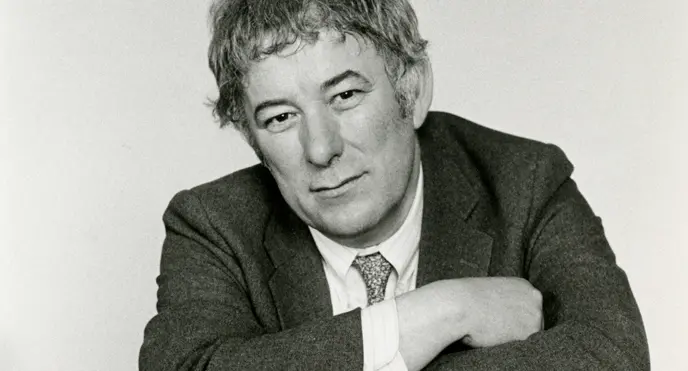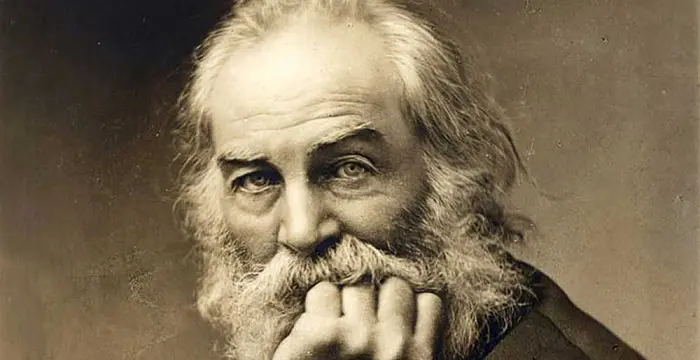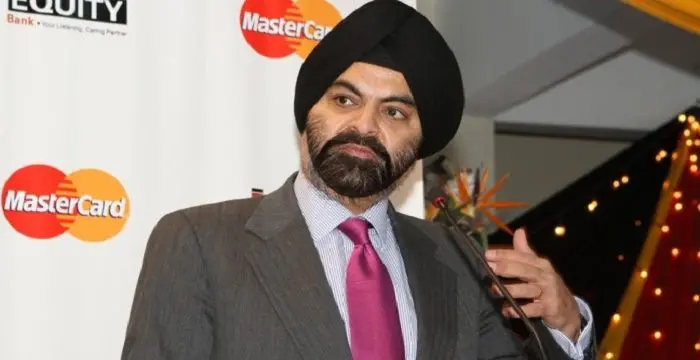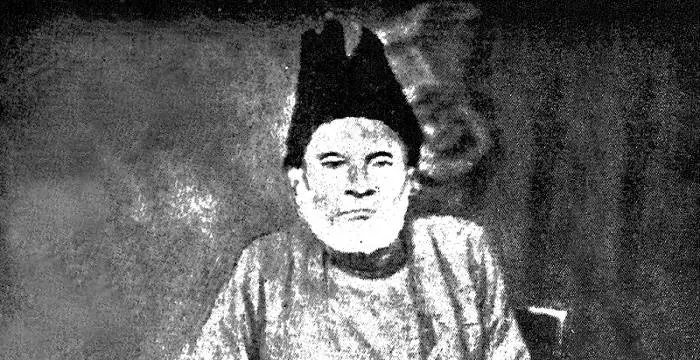
Mirza Ghalib - Poets, Family and Family
Mirza Ghalib's Personal Details
Mirza Ghalib was a distinguished Urdu and Persian poet
| Information | Detail |
|---|---|
| Birthday | December 27, 1797 |
| Died on | February 15, 1869 |
| Nationality | Indian |
| Famous | Writers, Poets |
| Spouses | Umrao Begum |
| Known as | Mirza Asadullah Beg Khan |
| Birth Place | Agra, Mughal Empire |
| Religion | Islam |
| Gender | Male |
| Father | Mirza Abdullah Baig Khan |
| Mother | Izzat-ut-Nisa Begum |
| Sun Sign | Capricorn |
| Born in | Agra, Mughal Empire |
| Famous as | Poet |
| Died at Age | 71 |
// Famous Writers
Joyce Meyer
Joyce Meyer is a Christian author and speaker. This biography provides detailed information about her childhood, life, achievements, works & timeline
Temple Grandin
Temple Grandin is a well-known American writer, autistic activist and animal expert. This biography profiles her childhood, life, achievements, career and timeline
Tennessee Williams
Tennessee Williams was one of the greatest playwrights of the 20th century. This biography of Tennessee Williams provides detailed information about his childhood, life, achievements, works and timeline.
Mirza Ghalib's photo
Who is Mirza Ghalib?
Mirza Ghalib was a distinguished Urdu and Persian poet, considered to be the last great poet of the Mughal era. This virtuoso, who was from a Central Asian family of Aibak Turks, who traditionally served as soldiers, followed his own passion in writing and transcended as one of the most influential and popular poets in the Urdu language. Overcoming all odds that eclipsed his personal life, including losing his father as a child, facing financial constraints throughout his life, becoming alcoholic, violating norms, and even getting incarcerated, he stood out with his fascinating poetry, prose pieces, epistles, and diaries. The most remarkable poems of this literary master were in the forms of the “ghazal” (lyric), the “qaṣīdah” (panegyric) and the “mas̄navī” (moralistic or mystical parable). Struggling through penury and other adversities, he finally garnered recognition after being inducted as the poet laureate in the court of the last Mughal emperor of India, Bahādur Shāh II. Born Mirza Asadullah Baig Khan, he used the pen-names Ghalib, meaning dominant, and Asad, meaning lion, while crafting his imaginations. His honorific was “Dabir-ul-Mulk, Najm-ud-Daula.” His rich body of literary work has remained an inspiration for other poets and writers for generations and continues to touch the soul of the Hindustani populace, beyond the ambits of India and Pakistan.
// Famous Poets
Charles Bukowski
Charles Bukowski was a German-born American novelist, short story writer and poet. With this biography, learn in details about his childhood, life, works, career and timeline
Seamus Heaney
Nobel Laureate Seamus Heaney was an Irish poet, playwright and translator. Know about his profile, childhood, life and timeline in the biography below.
Walt Whitman
Walt Whitman was an American poet, journalist and humanist. Read this brief biography to find more on his life & timeline.
Personal Life & Its Adversities
He was born Mirza Asadullah Baig Khan, on December 27, 1797, in Kala Mahal, Agra, to Mirza Abdullah Baig Khan and Izzat-ut-Nisa Begum. His birthplace now stands as the ‘Indrabhan Girls' Inter College.’ The room where he was born has been conserved.
He was a descendant of an Aibak Turk family, who, following the downfall of the Seljuk kings, had relocated to Samarkand, one of the oldest cities of Central Asia that is part of modern-day Uzbekistan. His mother was an ethnic Kashmiri.
During the rule of the Ahmad Shah Bahadur, the 15th Mughal emperor, Ghalib’s paternal grandfather, Mirza Qoqan Baig Khan, who was serving as a Saljuq Turk, migrated from Samarkand to India. He worked in Lahore, Jaipur, and Delhi, before settling in Agra. Mirza Qoqan Baig Khan was given the sub-district of Pahasu, located in the Bulandshahr district of Uttar Pradesh in India.
Ghalib’s father initially served the “Nawab” of Lucknow and thereafter, the “Nizam” of Hyderabad. He lost his father in the battle of Alwar in 1803, when he was five. Following the tragedy, Ghalib’s uncle, Mirza Nasrullah Baig Khan, took care of him.
Ghalib learned Urdu as his first language while Turkish and Persian were also used at his home. As a young boy, he studied in Persian and Arabic languages. A tourist from Iran had come to Agra and had lived in his home for a couple of years. Ghalib was then in his early teens. Ghalib soon befriended the tourist, Abdus Samad (originally called Hormuzd), who had just converted to Islam. Under Samad, he learned Persian, Arabic, logic, and philosophy.
His marriage was arranged with Umrao Begum, when he was 13 years of age. Umrao was the daughter of Nawab Ilahi Bakhsh and the niece of the “Nawab” of Ferozepur Jhirka. Following the marriage, he relocated to Delhi with his schizophrenic younger brother, Mirza Yousuf Khan, who later died in 1857.
His wife was regarded as a religious and orthodox lady. Although there are contrasting reports regarding the relationship of the couple, the poet has described his matrimonial life as yet another imprisonment, life being the first, in one of his epistles. The idea that life is an ongoing struggle, which can only conclude with the death of a person, is a recurring theme in his poetry.
He had become the father of seven children by the time he had reached his thirties. Unfortunately, all of them died as infants. The pain and agony of this personal loss became a theme in many of his “ghazals.”
His manners, including taking loans, borrowing books, drinking continuously, breaking norms, and gambling, often made him infamous. He earned the repute of being a “ladies' man” in the Mughal court circle and was also incarcerated for gambling. The virtuoso however remained nonchalant and continued with his demeanor.
On one occasion, when someone had appreciated Sheikh Sahbai’s poetry, Ghalib was quick to comment that Sheikh Sahbai could not have been a poet, as he had never drunk wine, never gambled, had never been thrashed with sandals by lovers, and had not even visited jail.
Titles Earned During the Mughal Era
He was awarded the title of “Dabir-ul-Mulk” by Emperor Bahadur Shah II in 1850. Bahadur Shah II also conferred him with the titles of “Najm-ud-daula” and “Mirza Nosha,” with the latter leading him to add “Mirza” as his first name. Such bestowal by the emperor signified Ghalib’s inclusion in the nobility of the regal court.
Emperor Bahadur Shah II was himself a noted Urdu poet, whose court was graced by other skilled Urdu writers, such as Mumin, Dagh, and Zauq, of whom Zaug was Ghalib’s closest rival. In 1854, Bahadur Shah II inducted Ghalib as his poet tutor. Ghalib soon became one of his noted courtiers. The emperor’s eldest son, Prince Fakhr-ud Din Mirza, also came under the tutelage of Ghalib.
Ghalib also served as the royal historian of the Mughal court and led his life either on the patronage of the emperor or on the magnanimity and borrowings from friends. With the downfall of the Mughal Empire and the emergence of the British Raj, Ghalib strived in pleading with every possible authority of the government formed by the British. He is also said to have travelled to Calcutta to get his full pension restored. Thus, penury and hardship continued to be an incessant part of his life.
He lived in a house in Gali Qasim Jaan, Ballimaran, Chandni Chowk, in Old Delhi. The house, which is now called ‘Ghalib ki Haveli,’ has been declared a heritage site by the ‘Archaeological Survey of India.’ Also known as the 'Ghalib Memorial,' the house holds a permanent exhibition of the poet that offers a glimpse of the poet’s lifestyle and of the rich architecture of the Mughal era.
Compositions of the Master
This literary master began composing when he was just 11 years old. Initially, he used the pseudonym ‘Asad’ and then adopted the name ‘Ghalib.’ He is also known to have written as ‘Asad Ullah Khan.’
He used to hold his Persian compositions in high regard. However, his Urdu “ghazals” have earned him more recognition among the newer generations.
The purview of “ghazals,” which till such time had been predominantly restricted to the expression of heartbreak in love, was expanded by Ghalib. He included different subjects in his “ghazals,” such as the enigmatic aspects of life and philosophy among others. However, in most of his verses, he maintained the tradition of keeping the gender of the adored unspecified.
Many Urdu scholars elucidated Ghalib’s “ghazal” compilations. The first such work was by poet, translator, and scholar of languages Ali Haider Nazm Tabatabai from Hyderabad.
Sarfaraz K. Niazi wrote the first complete English translation of the “ghazals” of Ghalib, which included a full Roman transliteration, an elucidation, and an extended lexicon. The book was titled ‘Love Sonnets of Ghalib’ and was published in India by ‘Rupa & Co.’ and in Pakistan by ‘Ferozsons.’
The fascinating letters of Ghalib, written in Urdu, have also given way for simple and popular Urdu, as before his time, letter-writing in the language used to be much more decorative. His way of writing was quite informal and sometimes humoros. His interesting letters gave the readers the feel of having a conversation with him.
He had once written in a letter, "Main koshish karta hoon ke koi aisi baat likhoon jo padhe khush ho jaaye," meaning, “I try to write such a thing that whoever reads becomes happy.” According to some scholars, Ghalib’s letters were good enough to earn him the place that he enjoys in Urdu literature. Prof. Ralph Russell, who was a British scholar of Urdu literature, translated the rich literary work of the master in the book ‘The Oxford Ghalib.’
His prose pieces were also beautiful and simple, yet unique, and created a revolution in Urdu literature.
Regardless of the matter, Ghalib never shied away from expressing himself, whether verbally or through his invaluable writings. Once, in 1855, when Sir Syed Ahmed Khan had requested him to add his words of praise to Khan’s illustrated edition of Abul Fazl's ‘Ai’n-e Akbari,’ Ghalib came up with a small Persian poem, censuring the ‘Ai’n-e Akbari.’
Ghalib not only rebuked Khan for focusing on such dead things, but also lauded the "sahibs of England” who, by that time, were in control of all the “a’ins” of his homeland. The poem has a translated version too, written by Shamsur Rahman Faruqi.
Ghalib witnessed the downfall of the Mughal Empire and rise of the British Raj, after the Indian rebellion of 1857 against the British ‘East India Company’ failed. He witnessed the disappearance of “bazaars,” localities, and lanes. He also witnessed the demolition of the “havelis” (mansions) of his friends. He chronicled the disturbed period of Delhi during 1857 in his work ‘Dastumbo.’
On September 20, 2010, an anthology of Persian poetry by Ghalib, titled ‘Kulliyat-e-Ghalib Farsi,’ compiled by Dr. Syed Taqi Abedi and containing a rare collection of 11,337 verses by the master, was released jointly by the ambassadors of India and Pakistan, during an Iranian Ministry of Arts and Culture-sponsored function in Tehran. It was earlier released at the ‘Maulana Azad National Urdu University’ in Hyderabad, India.
According to Dr. Taqi, by 1865, Ghalib had written 1,792 couplets in Urdu and 11,340 in Persian.
Views on Religion
He was a dedicated Muslim, who believed in seeking God instead of following religious practices. Through his literary work, particularly his poetry, he showed reverence for the Muhammad. Some of his works that illustrate his respect for the Muhammad include ‘Abr-i gauharbar’ (The Jewel-carrying Cloud) and a “qasida” of 101 verses.
He abhorred the practices of some “Ulema,” who, in Ghalib’s poems, reflect hypocrisy and prejudices. Ghalib also wrote against some “maulavis” (clerics) and criticized them for their lack of knowledge and for their imperious confidence.
Once, when the Indian rebellion of 1857 was in full swing, soldiers had dragged Ghalib to Colonel Burn for interrogation. This was on October 5, 1857, in Delhi. Bewildered by the Central-Asian Turk-style headdress he was wearing, the colonel asked, "Well? You Muslim?" Ghalib answered "Half?" The colonel asked again, "What does that mean?" Ghalib replied, "I drink wine, but I don't eat pork."
His take on Hindustan is palpable from the poem ‘Chiragh-i-Dair’ (The Lamp of Temple), which he wrote on his trip to Benares, in the spring of 1827, and where he mused about the Indian subcontinent.
Death & Legacy
This world-renowned poet breathed his last on February 15, 1869. He was interred in Hazrat Nizamuddin, in Delhi, India.
He often said that he would get his due recognition from later generations, and ironically, his eventual rise to fame occurred posthumously.
The life of this virtuoso has been portrayed in films and theater in both India and Pakistan. The Indian film ‘Mirza Ghalib’ (1954) starred legendary actor Bharat Bhushan as Ghalib. He was also portrayed by Pakistani film superstar Sudhir in the Pakistani film ‘Mirza Ghalib’ (1961). Reputed Indian poet, lyricist, and film director Gulzar produced a popular TV serial, ‘Mirza Ghalib’ (1988), which was aired on ‘DD National’ and had Naseeruddin Shah playing the poet.
Many South Asian singers, including Indians such as Begum Akhtar, Jagjit Singh, Lata Mangeshkar, Asha Bhosle, and Mohammed Rafi, as also Pakistanis such as Ghulam Ali, Abida Parveen, Rahat Fateh Ali Khan, and Mehdi Hassan, have sung his “ghazals.”
// Famous Capricorn Celebrities peoples
Weston Koury
All about American social media star Weston Koury, including his age, family life, girlfriends, birthday, and some fun facts.
Elin Nordegren
Elin Nordegren is the ex-wife of Tiger Woods. Check out this biography to know about her childhood, family life, achievements and fun facts about her life.
ItsJustNick
ItsJustNick is a Canadian YouTube star & social media personality. Let’s take a look at his family and personal life including age, date of birth, net worth, girlfriends, and fun facts.
Mirza Ghalib biography timelines
- // 27th Dec 1797He was born Mirza Asadullah Baig Khan, on December 27, 1797, in Kala Mahal, Agra, to Mirza Abdullah Baig Khan and Izzat-ut-Nisa Begum. His birthplace now stands as the ‘Indrabhan Girls' Inter College.’ The room where he was born has been conserved.
- // 1803Ghalib’s father initially served the “Nawab” of Lucknow and thereafter, the “Nizam” of Hyderabad. He lost his father in the battle of Alwar in 1803, when he was five. Following the tragedy, Ghalib’s uncle, Mirza Nasrullah Baig Khan, took care of him.
- // 1827His take on Hindustan is palpable from the poem ‘Chiragh-i-Dair’ (The Lamp of Temple), which he wrote on his trip to Benares, in the spring of 1827, and where he mused about the Indian subcontinent.
- // 1850He was awarded the title of “Dabir-ul-Mulk” by Emperor Bahadur Shah II in 1850. Bahadur Shah II also conferred him with the titles of “Najm-ud-daula” and “Mirza Nosha,” with the latter leading him to add “Mirza” as his first name. Such bestowal by the emperor signified Ghalib’s inclusion in the nobility of the regal court.
- // 1854Emperor Bahadur Shah II was himself a noted Urdu poet, whose court was graced by other skilled Urdu writers, such as Mumin, Dagh, and Zauq, of whom Zaug was Ghalib’s closest rival. In 1854, Bahadur Shah II inducted Ghalib as his poet tutor. Ghalib soon became one of his noted courtiers. The emperor’s eldest son, Prince Fakhr-ud Din Mirza, also came under the tutelage of Ghalib.
- // 1855Regardless of the matter, Ghalib never shied away from expressing himself, whether verbally or through his invaluable writings. Once, in 1855, when Sir Syed Ahmed Khan had requested him to add his words of praise to Khan’s illustrated edition of Abul Fazl's ‘Ai’n-e Akbari,’ Ghalib came up with a small Persian poem, censuring the ‘Ai’n-e Akbari.’
- // 1857His marriage was arranged with Umrao Begum, when he was 13 years of age. Umrao was the daughter of Nawab Ilahi Bakhsh and the niece of the “Nawab” of Ferozepur Jhirka. Following the marriage, he relocated to Delhi with his schizophrenic younger brother, Mirza Yousuf Khan, who later died in 1857.
- // 1857Ghalib witnessed the downfall of the Mughal Empire and rise of the British Raj, after the Indian rebellion of 1857 against the British ‘East India Company’ failed. He witnessed the disappearance of “bazaars,” localities, and lanes. He also witnessed the demolition of the “havelis” (mansions) of his friends. He chronicled the disturbed period of Delhi during 1857 in his work ‘Dastumbo.’
- // 5th Oct 1857Once, when the Indian rebellion of 1857 was in full swing, soldiers had dragged Ghalib to Colonel Burn for interrogation. This was on October 5, 1857, in Delhi. Bewildered by the Central-Asian Turk-style headdress he was wearing, the colonel asked, "Well? You Muslim?" Ghalib answered "Half?" The colonel asked again, "What does that mean?" Ghalib replied, "I drink wine, but I don't eat pork."
- // 1865According to Dr. Taqi, by 1865, Ghalib had written 1,792 couplets in Urdu and 11,340 in Persian.
- // 15th Feb 1869This world-renowned poet breathed his last on February 15, 1869. He was interred in Hazrat Nizamuddin, in Delhi, India.
- // 20th Sep 2010On September 20, 2010, an anthology of Persian poetry by Ghalib, titled ‘Kulliyat-e-Ghalib Farsi,’ compiled by Dr. Syed Taqi Abedi and containing a rare collection of 11,337 verses by the master, was released jointly by the ambassadors of India and Pakistan, during an Iranian Ministry of Arts and Culture-sponsored function in Tehran. It was earlier released at the ‘Maulana Azad National Urdu University’ in Hyderabad, India.
// Famous Indian peoples
Sunny Leone
Sunny Leone is an actress and model. Check out this biography to know about her birthday, childhood, family life, achievements and fun facts about her.
Swami Vivekananda
Swami Vivekananda was the chief disciple of Sri Ramakrishna, and was responsible for awakening India spiritually. Check this biography to know in detail about his life, profile and timeline.
Ajaypal Banga
Ajaypal Banga is an Indian-American business executive who is the CEO of MasterCard. Check out this biography to know about his childhood, family life, achievements and fun facts about him.
Ruskin Bond
Ruskin Bond is an award winning Indian author of British descent. This biography of Ruskin Bond provides detailed information about his childhood, life, achievements, works & timeline.
Urmila Matondkar
Urmila Matondkar is an Indian film actress known for her films like ‘Rangeela’ and ‘Satya.’ Check out this biography to know about her childhood, family life, achievements and fun facts about her.
Ashoka
Ashoka was the third emperor of the Mauryan Dynasty and ruled almost the entire Indian subcontinent. This biography profiles his childhood, life, reign, achievements and timeline
Mirza Ghalib's FAQ
What is Mirza Ghalib birthday?
Mirza Ghalib was born at 1797-12-27
When was Mirza Ghalib died?
Mirza Ghalib was died at 1869-02-15
Where was Mirza Ghalib died?
Mirza Ghalib was died in Gali Qasim Jaan, Ballimaran, Chandni Chowk, (now Ghalib ki Haveli, Delhi)
Which age was Mirza Ghalib died?
Mirza Ghalib was died at age 71
Where is Mirza Ghalib's birth place?
Mirza Ghalib was born in Agra, Mughal Empire
What is Mirza Ghalib nationalities?
Mirza Ghalib's nationalities is Indian
Who is Mirza Ghalib spouses?
Mirza Ghalib's spouses is Umrao Begum
What is Mirza Ghalib's religion?
Mirza Ghalib's religion is Islam
Who is Mirza Ghalib's father?
Mirza Ghalib's father is Mirza Abdullah Baig Khan
Who is Mirza Ghalib's mother?
Mirza Ghalib's mother is Izzat-ut-Nisa Begum
What is Mirza Ghalib's sun sign?
Mirza Ghalib is Capricorn
How famous is Mirza Ghalib?
Mirza Ghalib is famouse as Poet



